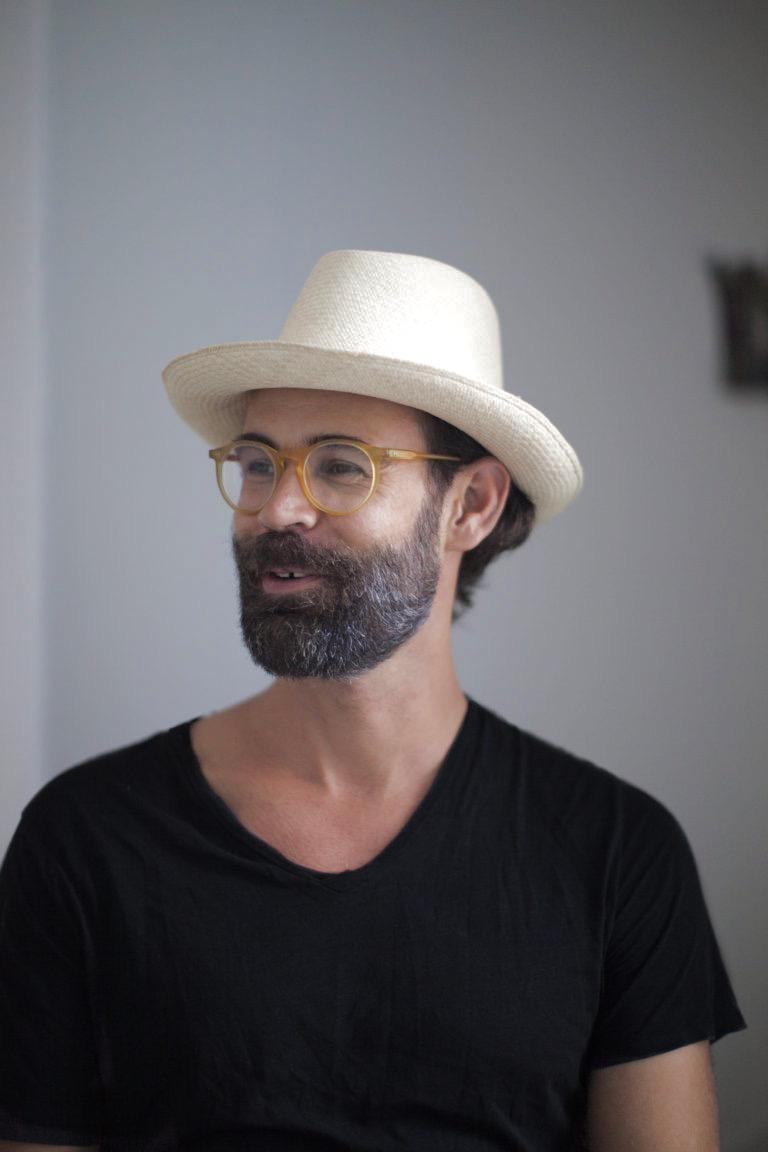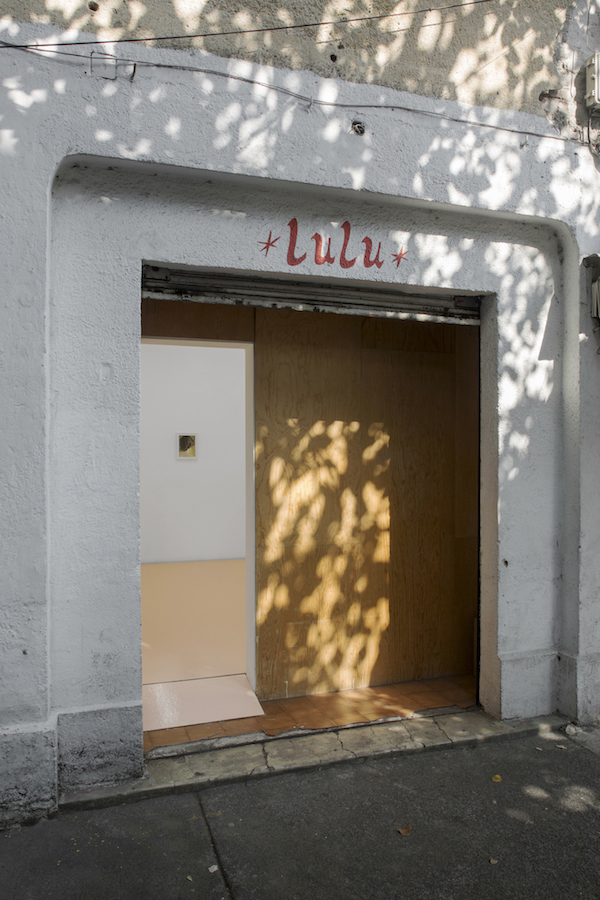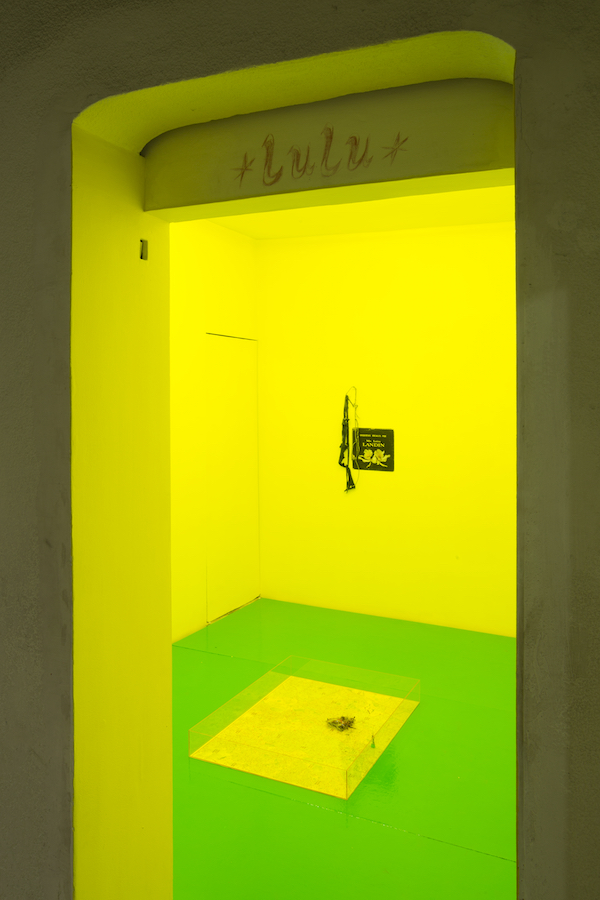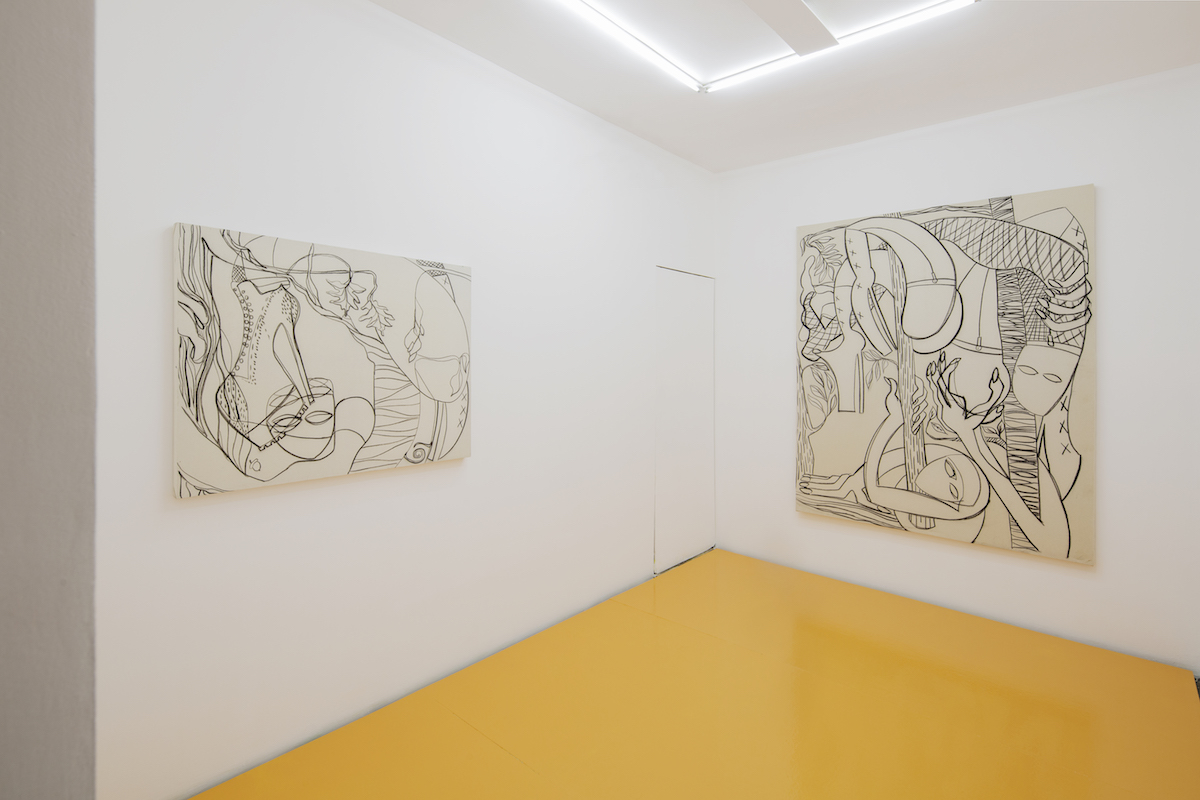A writer and independent curator based out of Mexicao City, Chris Sharp was formerly news editor at Flash Art International and editor-at-large of Kaleidoscope, he is a contributing editor of Art-Agenda, and his writing has appeared in many magazines and on-line publications. He co-founded the project space and gallery Lulu in 2013 when nothing like Lulu existed in the art scene there. When it comes to collecting, he has a preference to and focus on small-format work.
Chris Sharp has revealed to LARRY’S LIST that he sometimes gets artworks by trades with artists as writers, his considerations when making a purchase, his favourite work by his mother and painter Shana Sharp, his advice on collecting artists from Mexico, as well as how he fell in love with exhibition making.

Collecting
What made you want to start collecting art? What is the main motivation behind your collecting?
Well, I am a writer and curator and I genuinely love art. I worked many years in the field without ever dreaming of buying a work of art, because I just couldn’t afford it. It was just never even a question or possibility. Something that other people did. I would occasionally receive a gift from an artist which struck me as nothing short of a miracle, or accident, or misunderstanding; and as such, didn’t really belong to me, but it wasn’t until the first edition of Material Art Fair in 2014 in Mexico City that I bought my first work of art. It was Sarah Crowner edition that cost $150 USD. I remember deliberating a long time about it, but then the moment I did it, spent money on something that would neither clothe, nor feed nor take care of me in any of the usual measurable ways, it felt like the most sensible thing I had ever done in my life. I have a maniacally addictive personality, so since taking the plunge, things have just gotten worse and worse.

Why are you more interested in emerging artists? And why do you focus on small-format artworks?
I am more interested in emerging artists because not only are they the ones I can afford, but they are the ones who typically need support, they need the money. I focus on small-format for practical reasons as well as spiritual ones—I have a small apartment, but more importantly, I am committed to economy almost as a religious principle. By economy, I do not mean cheapness, but rather the essential, only what is necessary. Besides, I do not subscribe to the fallacy that in order for a work to be important or significant that it must be large or outsized. Look at Lucas Arruda, Nina Canell, Santiago de Paoli, Paul Klee or Chardin (to name but a few), artists known to work or have worked in small format.
Is there any particular type of art that has consistently attracted you, or anything that unites all the works you have acquired?
Beyond the question of economy, I would have to say a commitment to form and materials, to making; virtually no conceptual art, and no art about art.


What were the first and the latest artworks you purchased?
The last work I purchased was a photo by Jochen Lempert who is one of my favorite living artists. But as a writer, I often do trades with artists, and my latest trades include works by Joshua Abelow, Josh Brand and Matt Paweski.
How many artworks do you own? Where do you display your collection?
I suppose I own around 130 works. I live with about everything, salon style (which defeats my principle of economy), very carefully.

Where have you presented your art collection publicly?
A selection of works was recently featured at the Palais de Tokyo, who rebuilt a replica of Lulu and invited us to host a retrospective in it. Since I own works (as personal acquisitions or gifts) by roughly half of the artists who have been shown at Lulu, it made the most sense, so practically speaking, that we exhibited my collection.
What considerations guide you to make a purchase?
If I feel like I can’t live without the work, whether I have the money, and timing.

What is your most treasured artwork?
Not an easy question. After a painting of Lulu by my mother, the painter Shana Sharp, a small drawing by the little known English poet and artist David Robilliard. It is a drawing of an ape, which seems to have been dashed off rather quickly, and yet, the almost plaintive sadness in the ape’s eyes, which remain simian, and not human, is uncanny. It is a work whose massive impact, for me, is totally disproportionate to its simplicity and formal economy, and therefore something of a masterpiece. I remember being amazed when I first saw it a few years ago, that not only you could get works by Robilliard, but that somebody like me could afford them.


Lulu project space
How did you become a curator?
It was all an elaborate accident. After graduating from school in Paris, where I studied French literature, I met a gallerist, Fabienne Leclerc who invited me, for reasons still unknown to me, to curate her summer show in 2006. She sent me on a research trip to New York, San Francisco and Los Angeles, where I did my first studio visits (which I quickly realized were my favorite places to be in the world), and then I went back and curated her summer show. Despite the fact that I knew nothing about art, the show was, if not good, then thoughtfully installed, and I fell in love (with exhibition making).

What is your motivation behind opening a project space like Lulu?
The initial motivation for Martin Soto Climent and I (Martin and I co-founded it; I now run it alone, since a number of years) was to participate and contribute in the Mexico City art scene, which, at the time we opened it in 2013, didn’t really have anything like Lulu. My motivations now are more complex, which revolve around localizing a curatorial practice in time and space, as much as they are committed to foregrounding art practices which perceive art as much more than a conceptual mode of journalism.
Why did you choose this location in Mexico City for opening the space there?
I didn’t move to Mexico to open a space. I moved there because I fell in love with the very lovable place that Mexico City is. We had the idea, rather spontaneously, for opening the space a few months after I arrived.

How are your curatorial projects at Lulu related to your collecting? How does your collecting and curatorial practice enrich each other?
My collecting and Lulu aren’t really related, at least not directly. Which is to say, I do not invite an artist to show based on whether or not I want their work, but I would live with a work by virtually every artist we have shown at Lulu.
As for the second part of your question, this is something I am still figuring out. It wasn’t until I started living with art that I realized the importance of collecting and what it does historically, that say, curating cannot do. Both have a way of articulating and organizing specific pockets or constellations of coherence in the vast field of art, but one does so temporally while the other does so, more or less, permanently. Both modes resonate in different, yet significant ways throughout the discourse and field of art, even if the private collection is not always seen. Placed into proximity of one another, works of art, no matter how different they might be, always affect and modify each other. Something happens when works by, say, Allison Katz and Michael E Smith co-exist in the same collection (not to mention the same program). They mutually deepen and enrich one another, articulating potentially unexpected and surprising points of entry in both practices; and I would like to think that, at the risk of sounding new agey, that this invisibly reverberates outward throughout their work in general. As self-important or melodramatic as it might sound, good collecting does precisely that: creates mysterious and productive conjunctions, all but adding a second life to the work, and as such, possesses a unique discursive as well as art historical function.

What are the upcoming projects at Lulu that we should keep an eye out for?
All of them! At the moment, we are preparing a solo exhibition of the Costa Rican, San Jose-based painter Federico Herrero. Federico’s work is very special in that, in building a practice that draws upon the existence of paint in our everyday, lived reality (signs, curbs, buildings, etc), he has managed to carve out and create a plausible and compelling space for painting in a context– Latin America– that does not really have any space for painting in contemporary art.

The Art World
Who inspires you the most in the art world?
People (artists, curators, writers, collectors, etc) who genuinely love art– of which, believe it or not, there are much less than you would think in the art world. And several of my colleagues, like all the galleries I co-run LA MAISON DE RENDEZ-VOUS with, a space in Brussels shared by Lulu, LambdaLambdaLambda, Prishtina, MISAKO&ROSEN, Tokyo, and Park View/Paul Soto, Los Angeles. I am constantly learning from them. Jason Hwang from High Art in Paris is one of the keener thinkers I know; we are often in dialogue. I also greatly admire and respect kurimanzutto and the work they have done for Mexico and Latin America. If I know anything about curating, I learned it from Claire Le Restif, Simone Menegoi, and definitely, the artist Jean-Luc Moulène.
What is your advice to collectors who may be interested in collecting artists from Mexico?
It would be the same as everywhere: don’t be a hypebeast, take risks and actively cultivate a healthy dread of cliches.
Can you name three emerging artists who should be on our radar?
As much as I would like to endorse three emerging positions, I would rather valorize three relatively overlooked, and yet very important, idiosyncratic positions: Padraig Timoney, Merlin James and Fergus Feehily (all white dudes! Who, for better or for worse, have notmanaged to economically benefit from the intrinsic privilege of their gender and identity!). All three of these artists do everything they can to not have careers of exemplary success while continually taking risks and making some of the most formally daring and honest work I know of.

Column: Shana Sharp, David Robiliiard, and Joshua Armitage. Courtesy of Chris Sharp.
Related: Chris Sharp, Lulu
Instagram: @chrissharplulu
A selection of artists Chris collects:
Aliza Nisenbaum
Allison Katz
Jannis Marwitz
Jennifer J. Lee
Meena Hasan
By Ricko Leung





